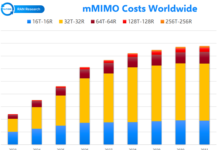Silicon photonics is still a small market today, with sales at die level estimated to be US$30 million in 2016. However, it has big promise, with a 2025 market value of US$560 million at chip level and almost US$4 billion at transceiver level.
According to Yole Développement (Yole), silicon photonics technology will grow from a few percent of total optical transceiver market value in 2016 to 35% of the market in 2025, mostly for intra-data center communication. The market research & strategy consulting company explains: the strongest demand is for 400G. In parallel, 200G could be only an intermediate step between 100G and 400G. explains Dr. Eric Mounier, Senior Technology & Market Analyst at Yole.
Silicon photonics technology has clearly reached its tipping point, with transceivers shipping in volume, announces the consulting company. Market evolution, competitive landscape, technology innovation, business opportunities: discover today what has been changed within the latest two years.
“We believe we are only at the very beginning as there is massive ongoing development worldwide for further integration”, asserts Dr. Mounier. And he adds: “The recent involvement of large integrated circuit foundries, such as TSMC’s relationship with Luxtera, and GlobalFoundries with Ayar Labs, are very encouraging signs showing the big promise for silicon photonics.”
![]()
The “Zero-Change” processes currently in development, manufacturing optical components without making any changes to a CMOS process, are targeting future inter-chip optical interconnects that could represent huge market volumes. Silicon photonics is at the maturity level of the electronics industry in the 1980s and there are still challenges to overcome. For all these challenges, technical breakthroughs will be necessary and are detailed in Yole’s silicon photonics roadmap:
• Laser source integration: lasers are still in competition with VCSELs for low distance and developments of Si-based lasers are no longer progressing. Quantum dot lasers could be a solution in long term as they are less temperature sensitive.
• Modulators: smaller size modulators are required and silicon photonics offers modulator integration advantage.
• Assembly and testing: more advancements in lower cost packaging and wafer level testing are needed.
• Design and software: specific software are required for photonics with pre-defined models.
• Supply chain maturation similar to the semiconductor supply chain.
• New manufacturing solutions: for example, a new trend is to have a zero-change approach on CMOS lines.
• Higher distance transmission.
A detailed description of Silicon Photonics report from Yole is available on i-micronews.com, photonics reports section.


















